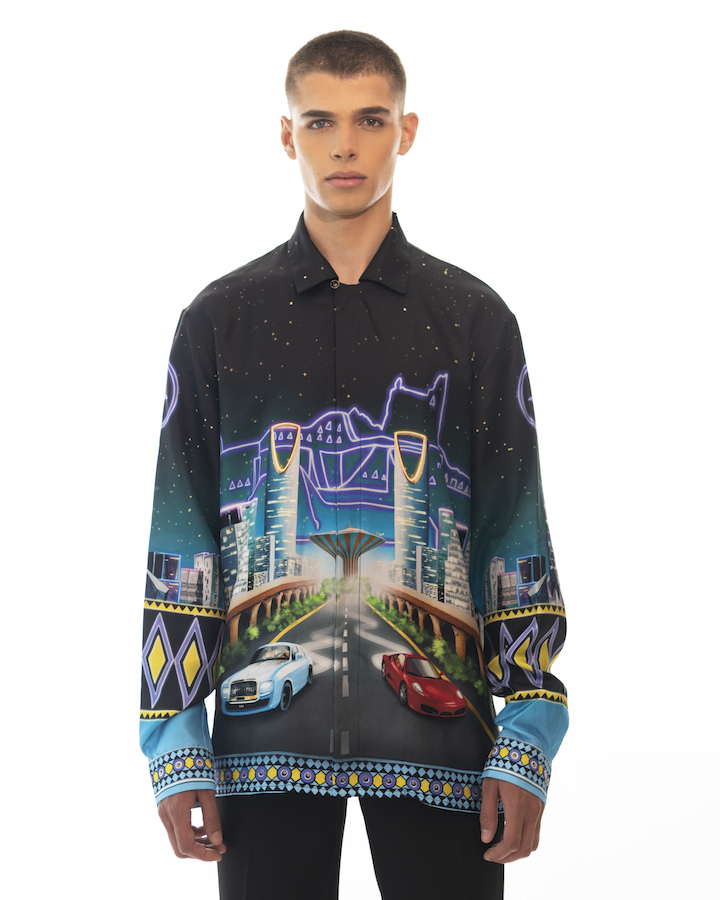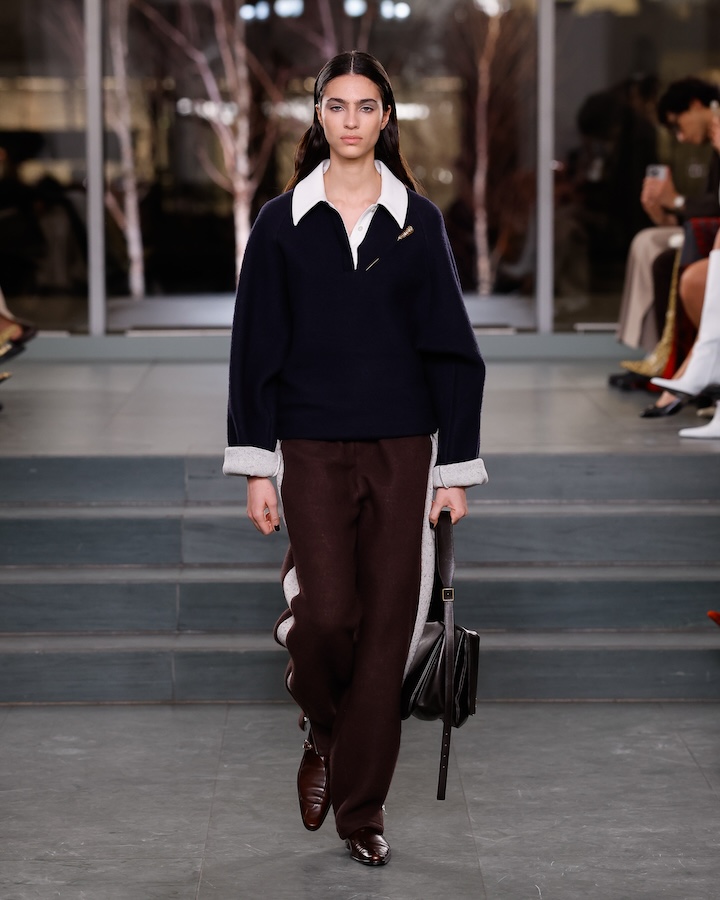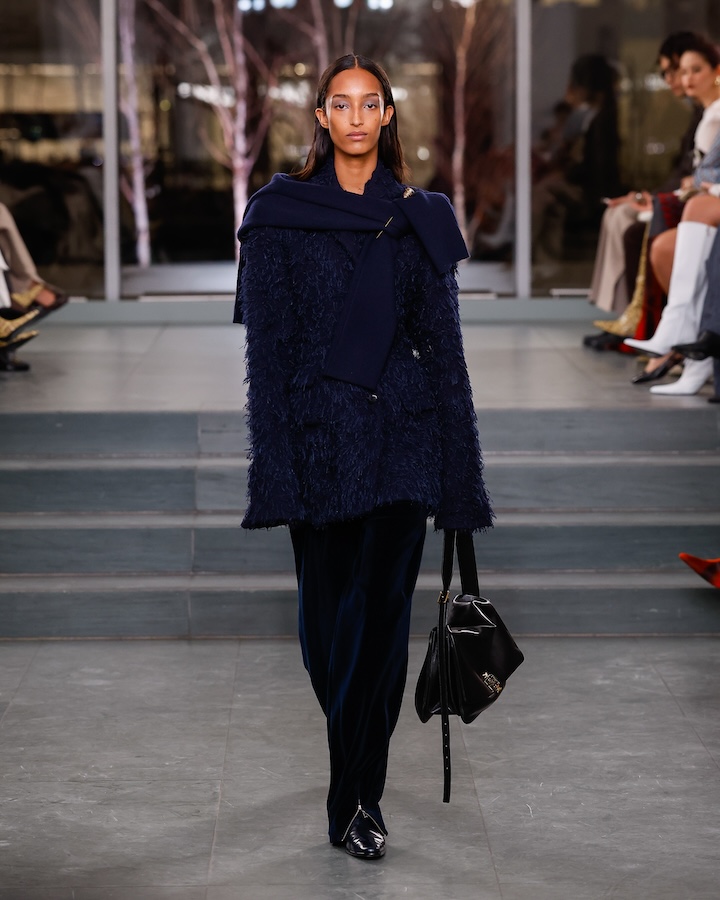RIYADH: “I was very motivated by (the idea of) integrating my experiences as a Saudi and contributing to the creation of a more contemporary Saudi design identity through my point of view,” Saudi fashion designer Mohammed Khoja, founder of luxury label Hindamme, tells Arab News. “My ultimate goal is to open more doors and to spread Saudi culture to global audiences.
“Hindamme has grown considerably since its inception, and I am very optimistic about what’s to come. I believe brands such as mine are proving to be more lucrative and I’ve observed an uptick in demand, and opportunities for growth, in recent months,” he continues.
Hindamme is an old Arabic adjective that roughly “a harmonious aesthetic form.” That is what Khoja hopes to capture in each of his creations — combining a bold but minimalist approach to ready-to-wear fashion.

Mohammed Khoja is the founder of luxury label Hindamme. (Supplied)
Hindamme’s “Season V” collection, for example, drew on color theory, and included “mood-enhancing” gradients as well as futuristic, nature-inspired themes in fabrics including velvet, nylon, and satin. Khoja debuted those designs in Paris in June last year, along with 15 other Saudi designers at a pop-up event called Emerge, organized by the Saudi Fashion Commission and MoCX, the Saudi Ministry of Culture's General Department of Innovation, in partnership with the Saudi Visual Arts Commission, the Saudi Culinary Arts Commission, and the Saudi Music Commission.
“Season V” was designed during COVID-19 lockdowns, and was partly inspired by Khoja’s desire to “reconnect” with the Earth. It included a heat temperature-gradient blazer, which Khoja intended as a stark reminder of the threat of climate change.
For his latest collection, his sixth, the designer was inspired by different regions of his homeland.
“It is inspired by my love of travel and pays homage to the Kingdom’s drive to promote tourism. I designed pieces that were sort of like elevated post cards for every region — it truly is like a love letter to our cultural diversity. The new designs are also a lesson in visual storytelling; they invite you on a journey to discover each of these glorious regions.” Khoja says.
Khoja says he spent months conducting extensive research. “I integrated the landmarks of each region that I felt were the most iconic and synonymous. Each design incorporates the iconography of that area, such as Jeddah, Riyadh, Aseer, Eastern Province and AlUla.”
Here, Khoja discusses some of the pieces from his latest collection.
AlUla

“The ancient languages and rock art are important elements for AlUla because of its rich ancient history of Lihyanite and Nabatean civilizations, so I utilized it for the shirt. Along with the ancient inscriptions and carvings, the AlUla shirt is decorated with famous ancient sites and landmarks such as Hegra and Elephant Rock, along with the integration of the majestic Arabian leopard,” the designer says.
Aseer

Khoja’s Aseer silk shirt includes a hand-painted backdrop of Rijal AlMaa village, decorated with Al-Qatt Al-Aseeri patterns, which the designer credits as a major source of inspiration throughout his career. “Aseeri culture has always been a great influence. I grew up reading books about the beautiful crafts and how women of the region specialized in this art,” the designer says, adding that Al-Qatt Al-Assiri was also the inspiration for his debut collection.
Jeddah

“Jeddah is a colorful array of iconography representing the bright colors of the coastal city,” Khoja says. “Jeddah is very famous for its breathtaking sunsets and I wanted to present its sunsets as the centerpiece. The shirt also includes the famous fountain as well as architecture from Jeddah’s historical district, Al-Balad.”
Eastern province

“With the Eastern Province design, I featured iconic landmarks of the region, with refences to Jabal Qarra in AlAhsa, Ithra and Dammam Well No. 7 — the first oil well discovered in the Kingdom,” says Khoja.
Riyadh

“The Riyadh silk shirt is another piece of visual storytelling and features iconic modern-day landmarks of our beloved capital such as KAFD, Kingdom Tower, and Al-Faisaliyah Tower. It infuses the rich traditions of its past with a neon homage to Diriyah and motif patterns taken from old Najdi doors,” Khoja said.

























